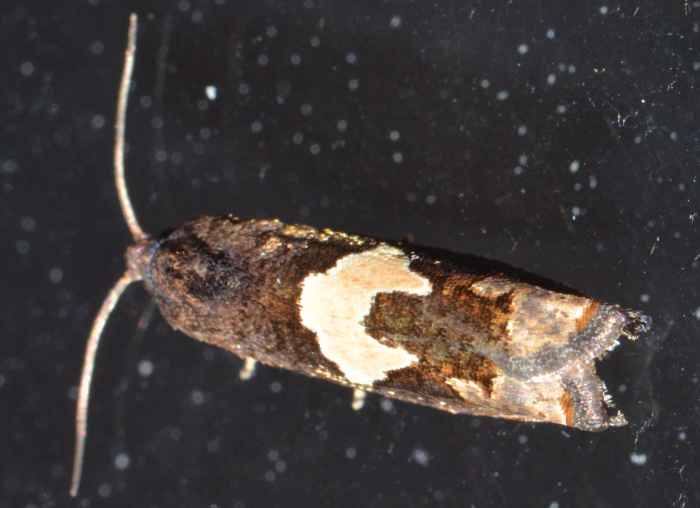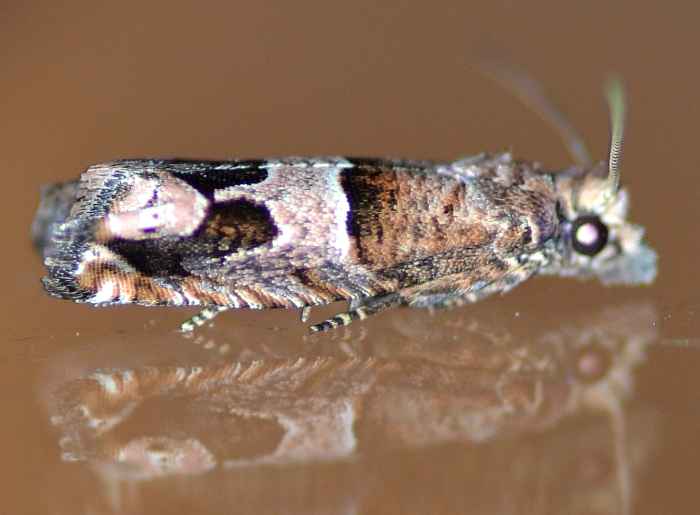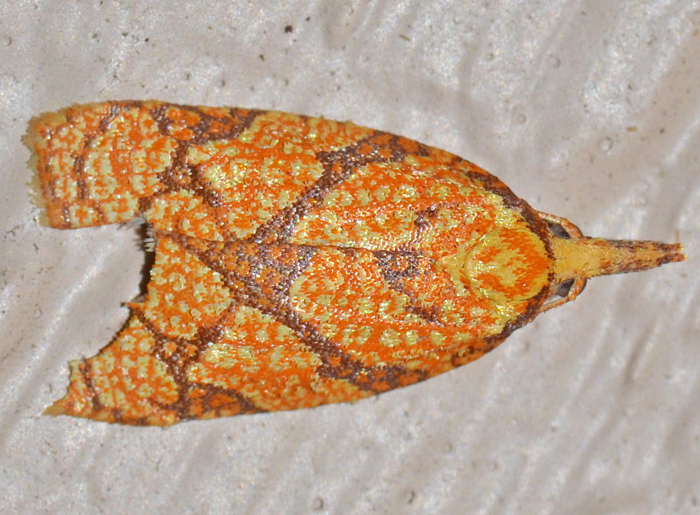 Cenopis reticulatana - Hodges#3720 | Formerly known as Sparganothis reticulatana, this pretty little moth features yellow forewings covered by a netlike pattern of orange and brown lines. Its larvae feed on a variety of trees and shrubs including--as the common name suggests--apples, blueberries, cherries, pears, and persimmons.
bug guide (this photo): http://bugguide.net/node/view/1245709 | ||
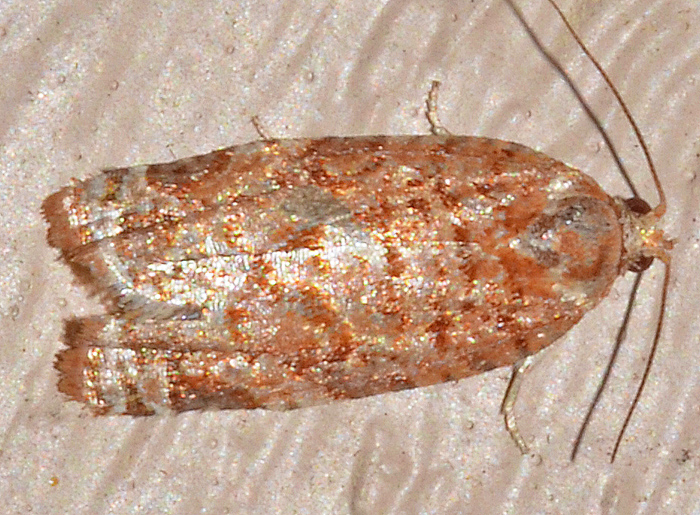 Choristoneura pinus - Hodges#3643 (Jack Pine Budworm). | The forewings of this little moth are reddish mottled with irregular silvery or yellowish bands and blotches. It is most common in Canada and adjacent parts of the US but also found its way to Tallahassee. Its usual habitats are groups of Jack Pine and Scots Pine trees. bug guide (this photo): http://bugguide.net/node/view/1204794 wikipedia: https://en.wikipedia.org/wiki/Choristoneura_pinus | ||
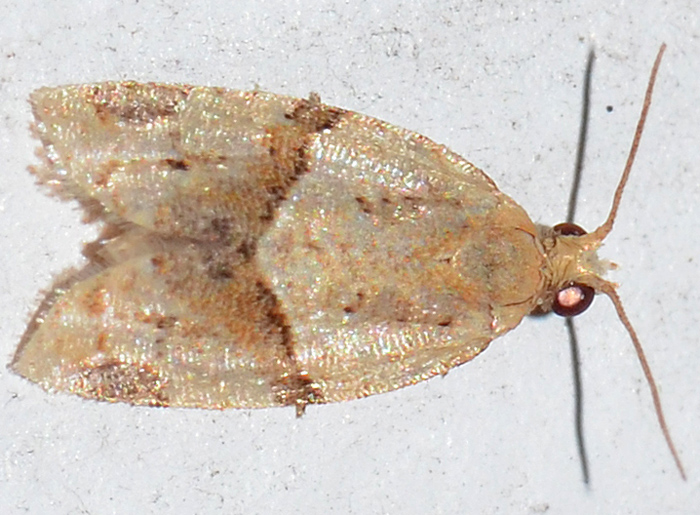 Clepsis peritana - Hodges#3688 (Garden Tortrix). | This is probably Clepsis peritana which is the most common and widespread tortricid species in North America. Its larvae feed on strawberries and other low plants. They prefer dying leaves. bug guide: http://bugguide.net/node/view/32034 | ||
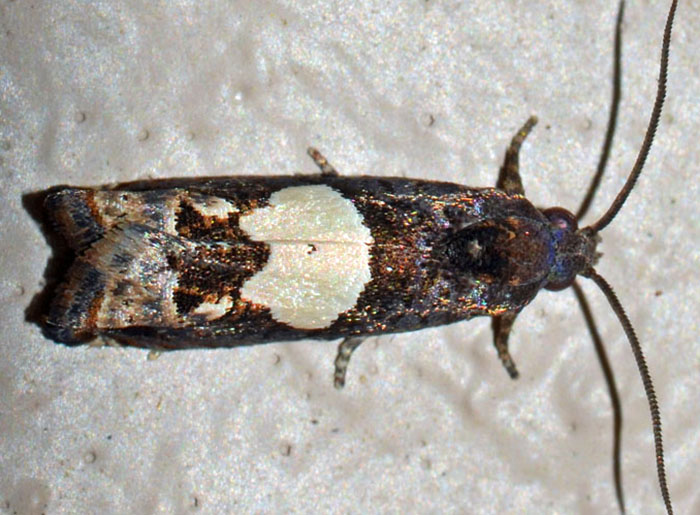 Epiblema otiosana - Hodges#3202 (Bidens Borer). | This moth has a striking white patch. It is Bidens Borer (Epiblema otiosana). The common name refers to the fact that the larvae bore into the stems of plants including ragweed. Go E. otiosana! The genus has 39 species. The small photos were taken on 09/10/11.
bug guide (this photo): http://bugguide.net/node/view/574636/bgimage moth photographers group: http://mothphotographersgroup.msstate.edu/species.php?hodges=3202 | ||
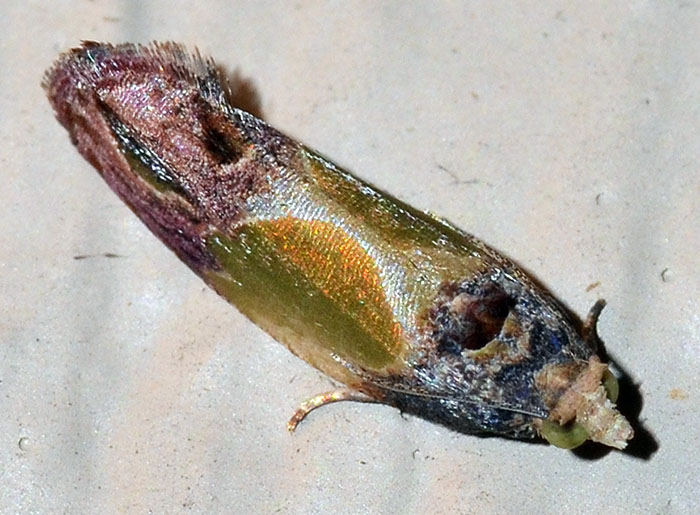 Eumarozia malachitana - Hodges#2749 (Sculptured Moth). | A small odd-looking moth with a head that looks a bit like it has a big snout. The species name "malachitana" refers to the mineral malichite which has a similar green color. This greenish tint, however, is not very pronounced in this specimen. bug guide (this photo): https://bugguide.net/node/view/1588597 wikipedia: https://en.wikipedia.org/wiki/Eumarozia_malachitana | ||
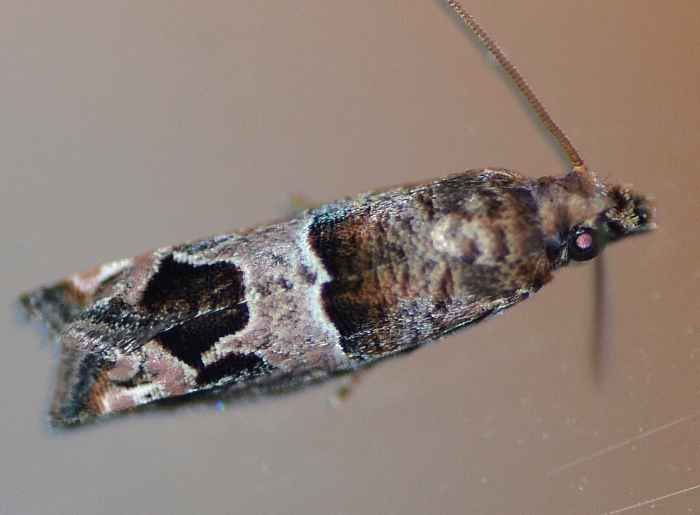 Sonia constrictana - Hodges#3218 | The Constricted Sonia Moth (Sonia constrictana) is in my opinion easily confused with Epiblema species (see also second link).
bug guide (these photos): http://bugguide.net/node/view/683372 Blanchard, J. Lepidop. Soc. 33, 179 (1979): http://peabody.research.yale.edu//jls/pdfs/1970s/1979/1979-33(3)179-Blanchard.pdf | ||
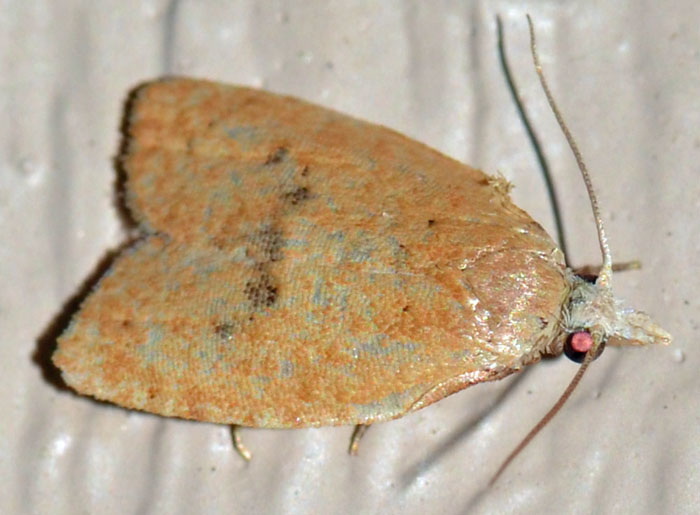 Sparganothoides lentiginosana - Hodges#3731 | Yes, another brownish-orange moth that has its home in the Southeastern US. As noted in the second reference, the first instar larvae web the edges of the leaves of their host plant. bug guide (this photo): http://bugguide.net/node/view/981330 Kruse and Powell, Zootaxa 2150, 1 (2009): http://www.mapress.com./zootaxa/2009/f/z02150p078f.pdf | ||
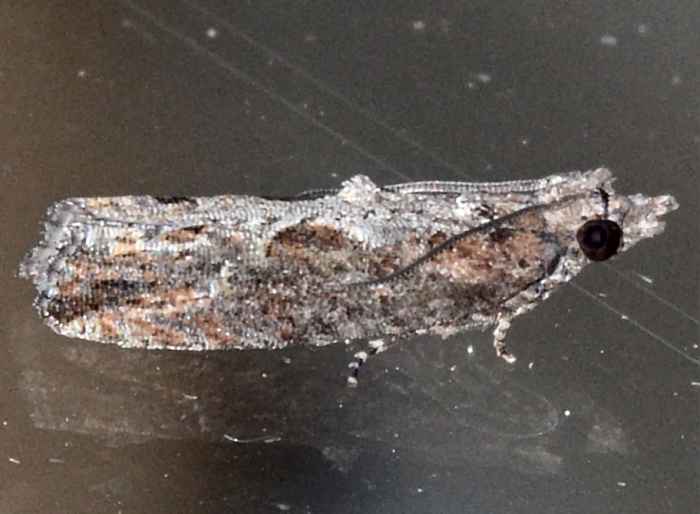 Strepsicrates smithiana - Hodges#2907 | In the US, larvae of Strepsicrates smithiana are leaf tiers of wax myrtles. While this moth is mainly found in the Southeastern US, it was also introduced to Oahu, Hawaii in 1955 to aid in the control of invasive firetrees (Myrica faya). bug guide (this photo): https://bugguide.net/node/view/335143 wikipedia: https://en.wikipedia.org/wiki/Strepsicrates_smithiana |


